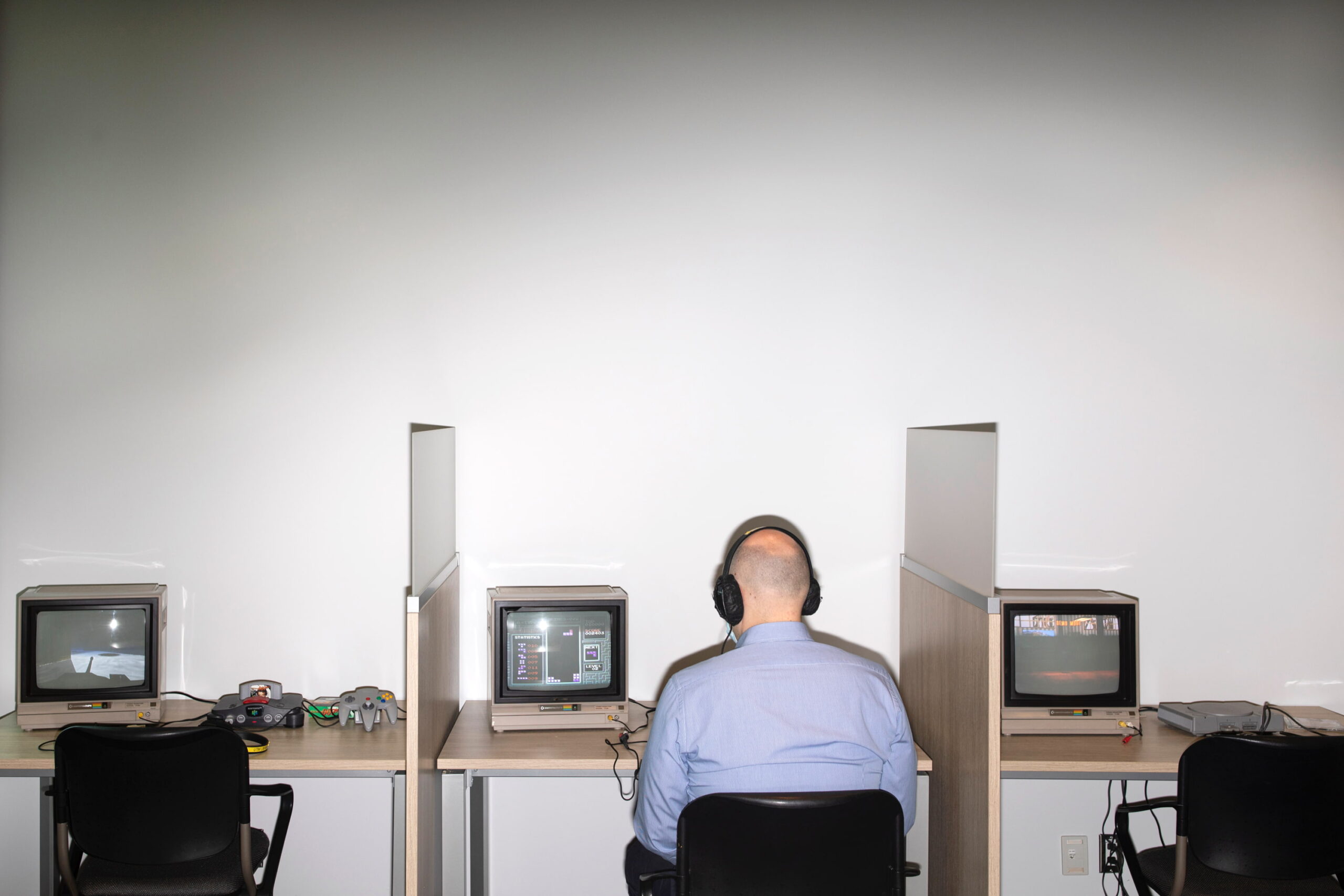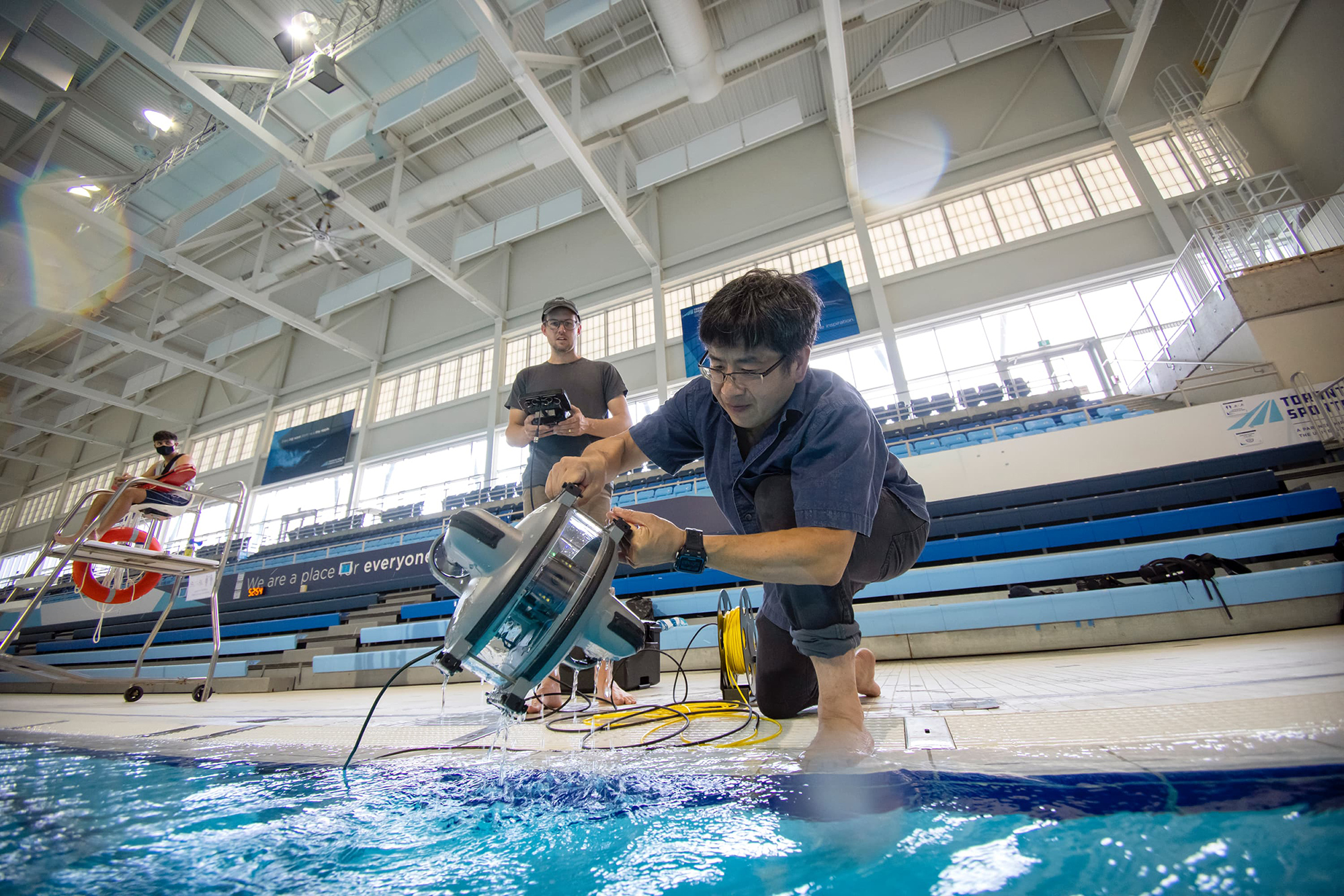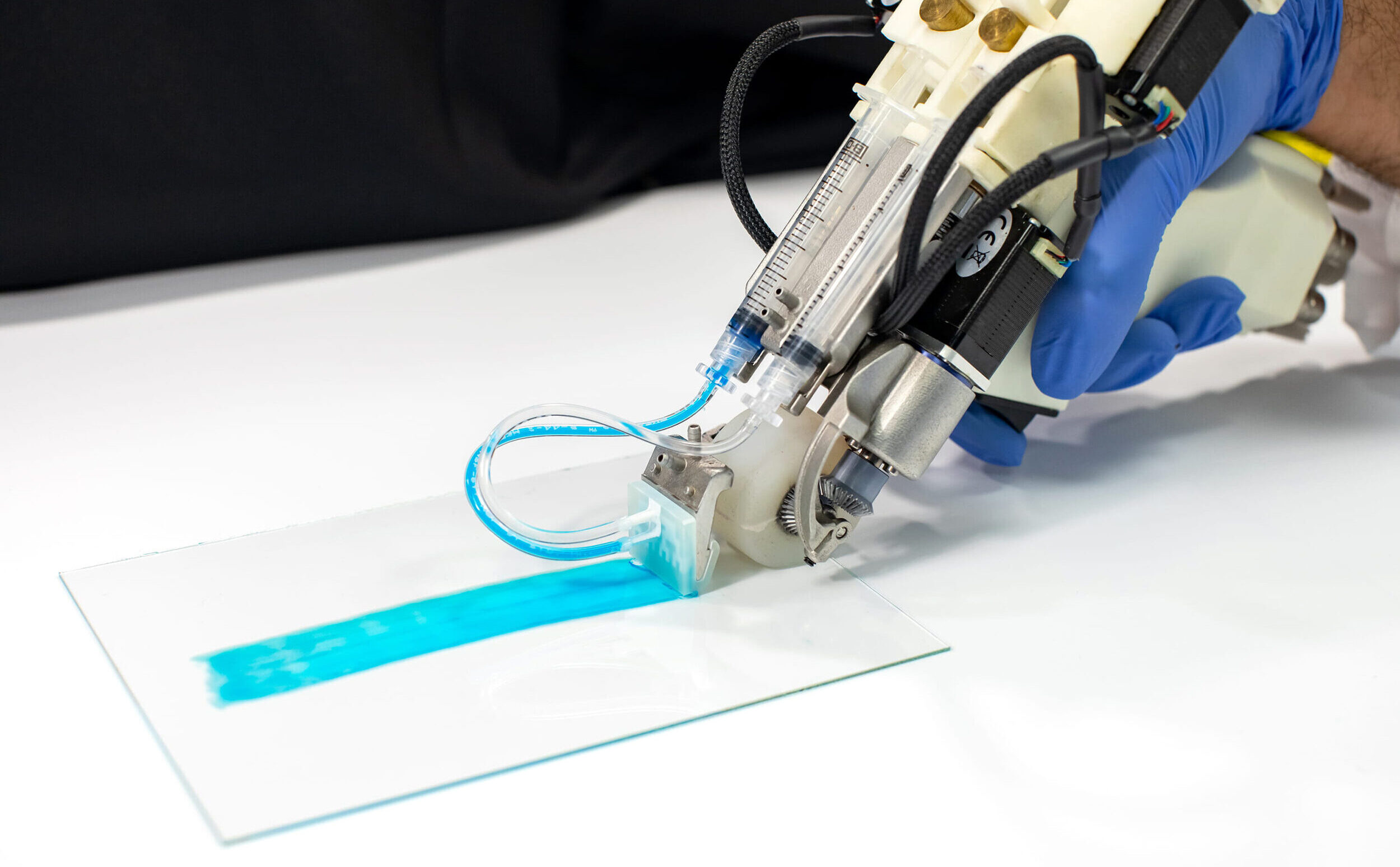Second Skin
Date: August 30
Time: 10:21 a.m.
Campus: St. George
This surgical tool, being developed by researchers at U of T and Sunnybrook Health Sciences Centre, could soon change how large burn wounds are treated.
The device – a kind of 3D printer for skin – will enable physicians to lay a sheet of biomaterial over a patient’s burn site and dispense a “bioink” to accelerate the healing process. The bio-ink, a solution containing mesenchymal stromal cells (a kind of stem cell), promotes skin regeneration.
Burns are currently treated with skin grafting, which involves transplanting healthy skin from other parts of the body onto the wound. This poses a problem when burns cover a large portion of the body. “With big burns, you don’t have sufficient healthy skin available, which can lead to patient deaths,” says Marc Jeschke, the director of the Ross Tilley Burn Centre at Sunnybrook and the project’s clinical collaborator. “A device like this could change the entirety of how we practise burn and trauma care.”
Since 2018, the printer has gone through a full redesign to allow physicians to treat a broader range of wound sizes and shapes, says Prof. Axel Guenther, whose engineering lab is leading the U of T side of the project. Guenther envisions surgeons being able to use the device in operating rooms in the next few years.
— Liz Do

The Next Level
Date: August 25
Time: 8:11 a.m.
Campus: Mississauga
The U of T Mississauga Library is now home to one of Canada’s largest video game collections.
Earlier this year, the library acquired the Syd Bolton Collection, a vast array of more than 14,000 video games, consoles and related materials such as instruction manuals and about 5,000 issues of specialty magazines. Bolton, who described himself as Canada’s top video game collector, was the founder and curator of the Personal Computer Museum in Brantford, Ontario. He died in 2018 at the age of 46.
Assembled privately over the past 30 years, the bulk of the collection contains games and hardware from the 1970s onward. It includes some of the first commercial home video consoles such as Odyssey and Atari, a complete run of games on Nintendo 64 and Sony PlayStation, and several classic arcade machines, including Pac-Man. The archive also contains a copy of one of the rarest Atari 2600 games in existence: Extra Terrestrials (not to be confused with Atari’s failed movie-licensed game, E.T. the Extra Terrestrial). Here, librarian Christopher Young tests Tetris on an ’80s-era Nintendo console.
The Bolton Collection will be made available to the university community and the general public through the UTM Library, and will provide opportunities for experiential teaching, game-related research and community engagement.
— Patricia Lonergan

The Life Aquatic
Date: August 18
Time: 10:16 a.m.
Campus: Scarborough
A new underwater drone equipped with a high-definition camera will give U of T Scarborough students an up-close look of what’s living beneath the surface of Ontario’s lakes.
The teaching tool will be used by undergraduate and master’s students supervised by Mathew Wells, a professor in the department of physical and environmental sciences. Here, staff members Chai Chen and Tom Meulendyk use the pool at the Toronto Pan Am Sports Centre to test the device for the first time.
The drone, which received funding from UTSC’s Centre for Teaching and Learning, can reach a depth of 75 metres – good for most bodies of water in the province and far deeper than a scuba diver can go. It’s tethered by a long cable and controlled by a remote with a digital screen. It’s also outfitted with bright LED lights and can record panorama video, offering an immersive view of fresh-water wildlife that can’t be replicated in a textbook.
“We are spoiled by the quantity and quality of fresh water we have in Canada, but most of us have no idea what the bottom of our lakes look like,” says Wells. “By visualizing what’s going on underneath the surface, maybe we can better appreciate our bodies of water.”
— Don Campbell


